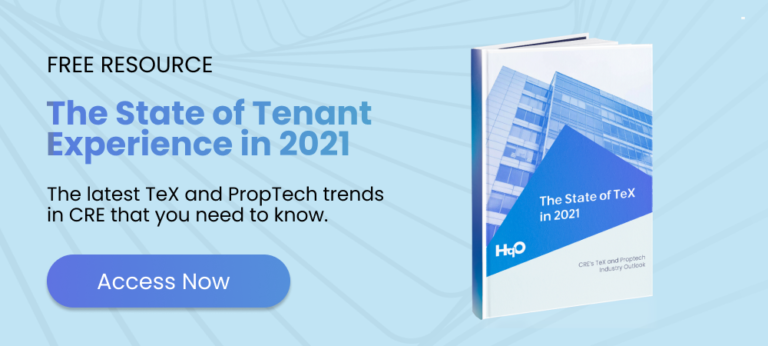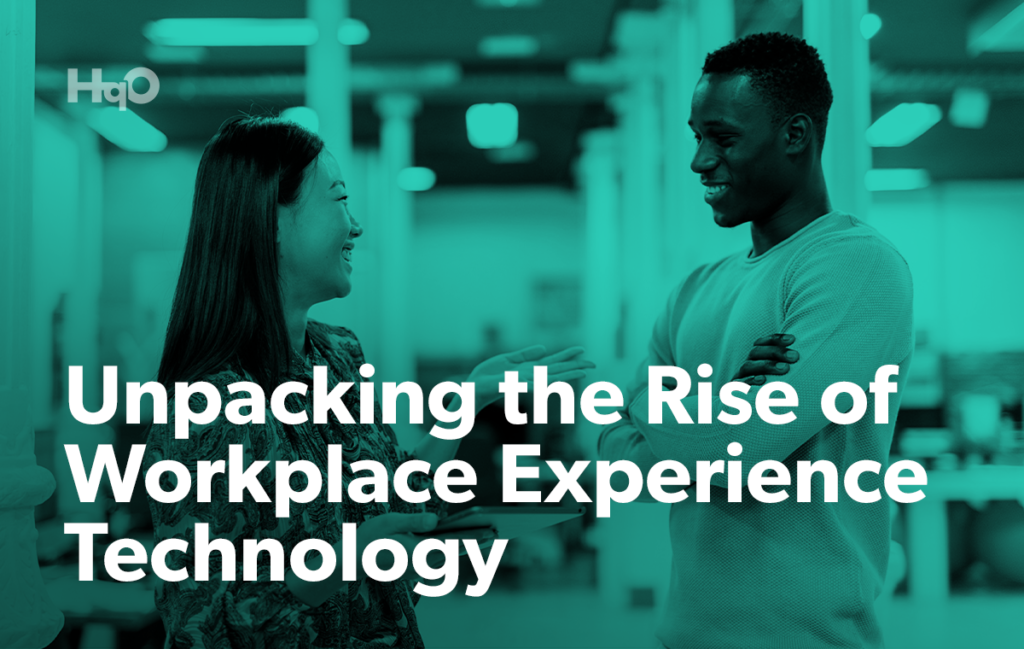When we released our commercial real estate forecast last year, The State of TeX in 2020, none of our predictions could have anticipated the complete digital revolution that was to come. Due to the onset of the global COVID-19 pandemic, the interest, demand, and competition for tenant experience technologies erupted at a breakneck pace. Now, modern commercial real estate trends are evolving to incorporate these new value drivers.
According to a recent McKinsey Global Survey of executives, the share of digital or digitally-enabled products across their portfolios has accelerated by as much as seven years during this time. Additionally, the newfound need for digitization has tripled the likelihood of respondents saying that at least 80% of their customer interactions are now digital in nature.
An incredible amount has changed. Here’s a sneak peek at our commercial real estate market analysis for 2021:
The COVID-19 Pandemic Flipped the Industry on its Head
Modern commercial real estate trends saw the pandemic force the business world into remote work models. Because of this drastic shift, where does the state of work stand?
Though remote work’s effects on productivity weren’t an initial concern at the beginning of 2020, perspectives around productivity and remote work have since changed. Company productivity has become susceptible to any number of external factors; employees have the additional burdens of educating children while schools are closed, overcoming other distractions while at home, and even experiencing fatigue from the inability to effectively separate their work lives from their home lives.
Colliers International surveyed 445 of its tenants during the peak of the pandemic. The data revealed that working remotely actually played a significant role in decreasing efficiency over time — causing a 22% decline in employee productivity since their shift to remote work.
On top of this, 80% of top performers miss their physical office locations. Though landlords will have to help tenant companies provide more flexibility for their employees, office buildings will still play a major role in the industry’s success. As a CBRE survey aptly predicts, “the office of the future may be modified to support impromptu collaboration, creative ideation, and social connections that are best served in person. It may become a communal hub for training, seminars, and career development. In all cases, the office must be equipped with the appropriate technology to effectively connect a more distributed workforce.”
“Phygital” Office Experiences are on the Rise
The rising flexibility in working preferences also indicates that the workplace and its community have now officially transcended the four walls of the office building, having reached a point where improvements to the physical office environment can no longer enhance the tenant experience on their own. One of the most prominent commercial real estate trends sees technology bridging the divide between the physical office and the digital workplaces, while also connecting dispersed employees in a way that is both engaging and thoughtful. Aptly put: property teams need to establish “phygital” — also known as omnichannel — office experiences.
Technology and CRE sources, such as everis US, have already started to visualize the real-world application of “phygital” office experiences. These may include everything from digital bulletin boards that display custom messages and reduce email consumption, to workplace avatars that assist with new employee onboarding, to physical workplace nudges that can increase productivity and wellness — such as automated changes in lighting and digital reminders to step away from one’s desk
You Will Need a Data-Driven Approach
In order for the office sector to survive, there needs to be a keen focus on attracting and retaining tenants, while creating unique workplace experiences that out-perform the home office. With CRE’s transition to a more consumer-first model, we know the greatest source of information comes from what property owners can’t see about their buildings. What do tenants really want, and how do they really use a given space?
These insights not only ensure a safer return to work but also serve as a differentiator in an otherwise uncertain, highly competitive market. If you’re actively collecting data from multiple sources about the needs of your tenants and their employees, you’ll be able to keep pace with the market and adapt to significant disruptors in your industry — even if that disruptor happens to be a global pandemic — while simultaneously making your workplace more attractive to its communities.
End-to-End Solutions Are the Key to Success
Today’s landlords and property owners face three major business challenges: attracting and retaining tenants, managing fragmentation of technology systems and partners, and differentiating their assets. To address all of these issues simultaneously — and to provide tenants with the digital, modern experiences they seek in the workplace — you will need full end-to-end solutions for your building.
There is a ubiquitous concept in computing that speaks directly to this goal: the operating system (OS). Whether it’s powering a mobile device, a laptop, or a server, the prime directive of any OS is to abstract away the enormous complexities of the underlying system and provide standard and streamlined methods of the user experience. This platform-based concept has always guided our approach to tenant experience; we know that a CRE operating system can not only enhance workplace environments and make them more desirable for building occupants but can also resolve the aforementioned business challenges for landlords in an ever-complex market. These kinds of end-to-end solutions will shape the future of commercial real estate and ensure adaptability as the market continues to evolve.
To learn more about the latest CRE and proptech data, download our comprehensive report: The State of TeX in 2021.




